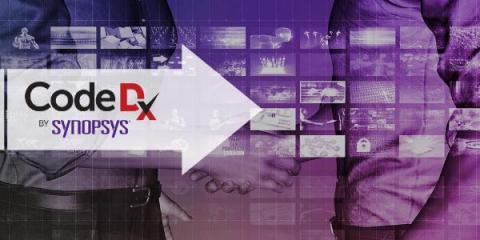Security | Threat Detection | Cyberattacks | DevSecOps | Compliance
Latest News
Application security testing is important-now can you quickly use the results?
Multiple AppSec tools lead to many results. Let Code Dx centralize your AppSec management to help you make sense of your data. Most organizations have more than one application—some large enterprises have hundreds or thousands of applications in development and production. Each application is constantly updated to fix security issues, improve performance, and meet new customer demands, and an essential part of the update process is to test the application for security issues.
Initial Access Brokers: Fueling the Ransomware Threat - The Monitor, Issue 17
Kroll has observed an uptick in actors offering network access on the dark web, particularly in the wake of recent disruptions to the ransomware-as-a-service (RAAS) ecosphere such as the ban on ransomware discussions in notorious underground criminal forums.
Steps to a Successful ISO 27001 Risk Assessment Procedure
ISO/IEC 27001 is an international set of standards that provide the requirements to set up an Information Security Management System (ISMS). Implementing ISO 27001 enables organizations to better manage and secure their information assets, including intellectual property, financials, employee details, customer data, and information entrusted by third parties. Furthermore, companies can prove that they are less vulnerable to IT security incidents or data breaches by achieving ISO compliance.
What To Do When Your Cloud System Crashes
Most organizations today rely on the cloud to store or manage at least some of their data and applications. If your business is considering (or already using) a cloud environment, it’s important that you know what to do if your cloud system crashes or experiences an outage. In this guide, we cover the basics of cloud computing and then outline some steps you can take in the event of a cloud crash or outage.
How to Assure Your Compliance Strategy Evolves Over Time
Compliance is a constant issue that affects businesses in multiple ways every day. Not only must your compliance program address individual acts of misconduct; the program must assure that your organization follows laws, rules, and regulations overtime — every day, day after day, in perpetuity.
Third-Party Risk Management Regulations Every Organization Should Know
Modern organizations operate in a complex business landscape. Increasingly, they rely on a plethora of third-party partners, vendors, and subcontractors to generate value, boost competitiveness, and strengthen their bottom line. And yet, these same third parties also create numerous risks that can disrupt the organization’s operations, affect its financial standing, and damage its reputation.
Data Risk Management in the Gig Economy
A huge swath of the U.S. workforce doesn’t actually hold a full-time job. As many as 40 percent of Americans work in the so-called “gig economy” — driving for ride-share services, selling handicrafts online, pet-sitting, managing a social media account for a local company, and so forth. Typically, a technology company (Uber, Etsy, Rover, AirBnB; the list is endless) matches those workers with customers who have a need.
Top 10 Risks Faced By the Manufacturing Industry
The global economy is more connected than ever, generating significant benefits for companies and industries operating worldwide. Nobody, however, is exempt from threats that drive supply chain and manufacturing risk. There is no doubt that the manufacturing industry is beset by numerous risks that affect the company and its human assets.
A Peek at JFrog's Iron Bank Accreditation for Xray and Artifactory
JFrog Artifactory and JFrog Xray recently underwent a rigorous hardening process to earn accreditation for inclusion in the U.S. Department of Defense’s Iron Bank, a centralized repository of digitally-signed and hardened container images. In this blog post, we’re pulling back the curtain on the process, in order to share our insights and lessons learned with our customers and with the DevOps community at large.






